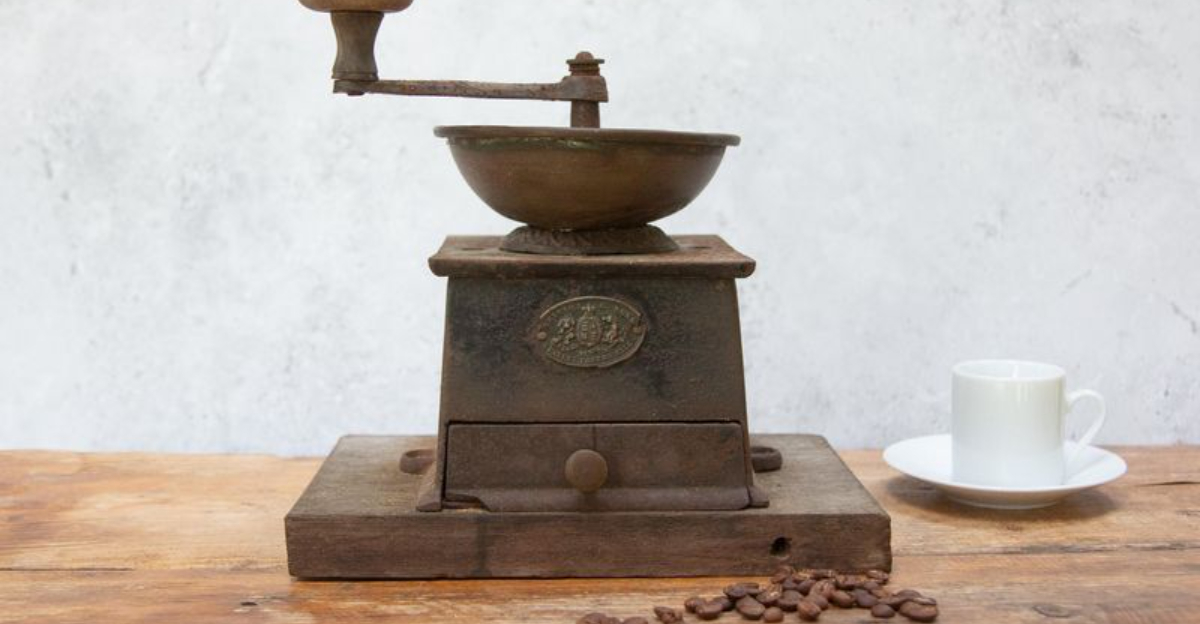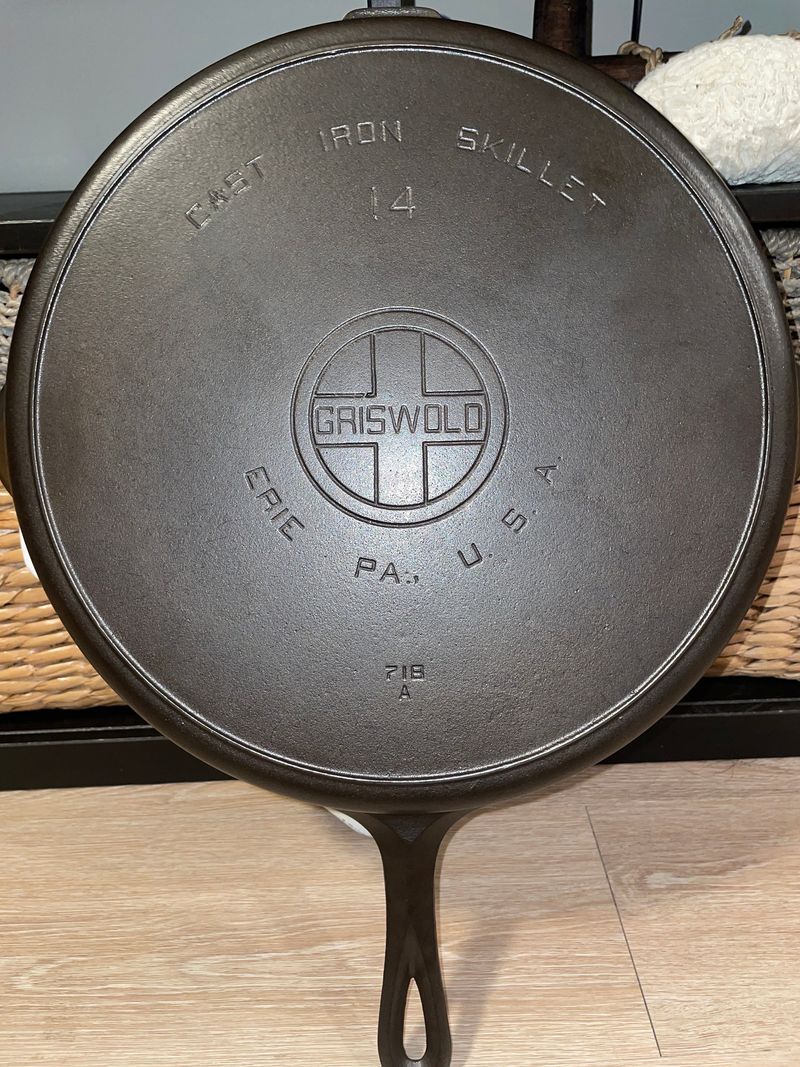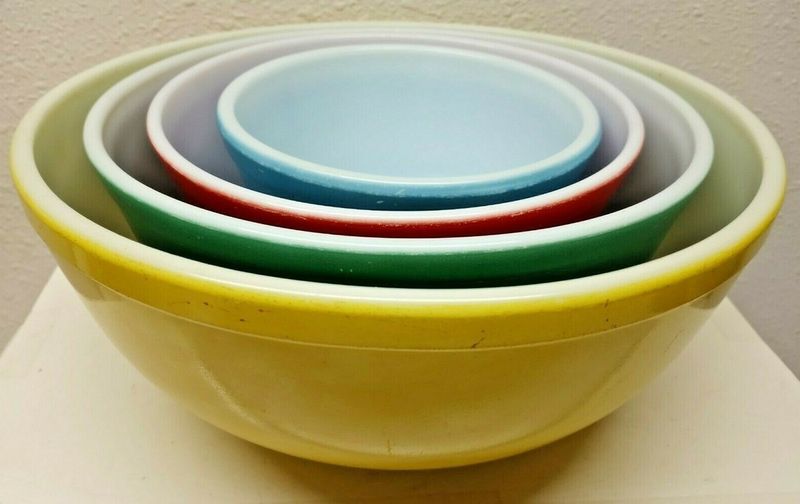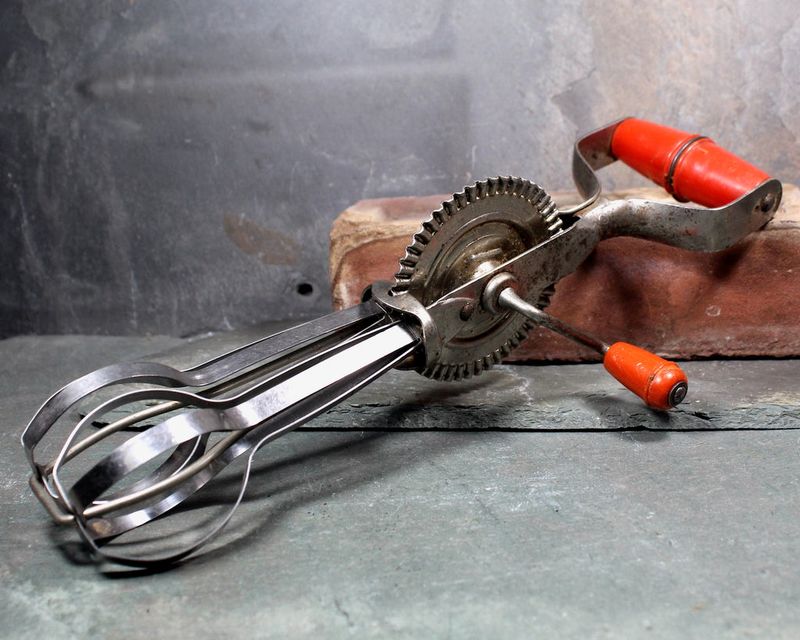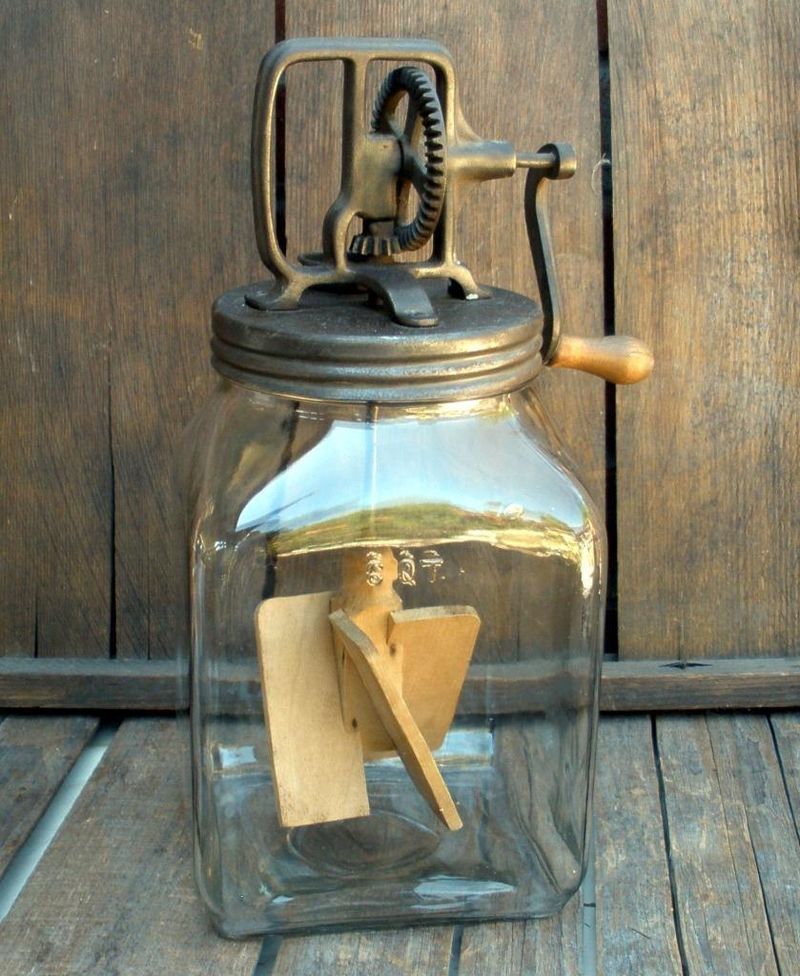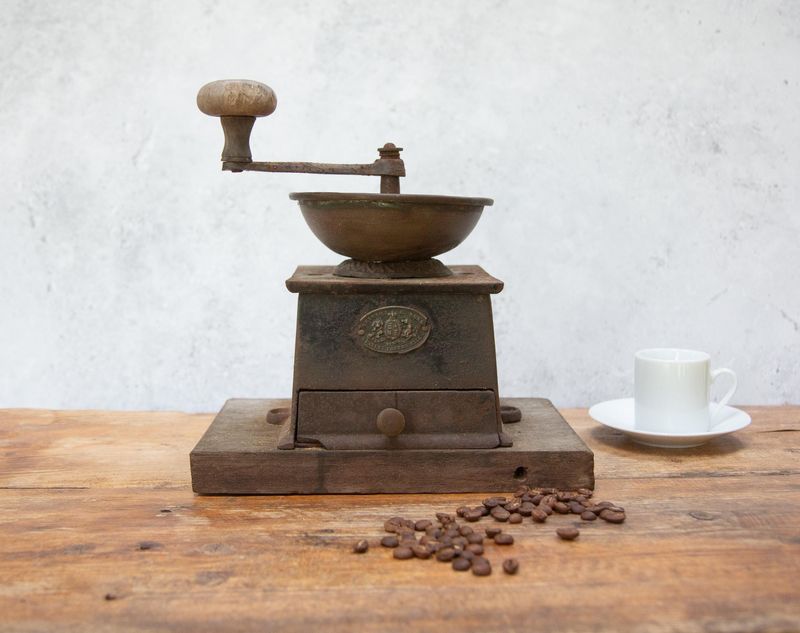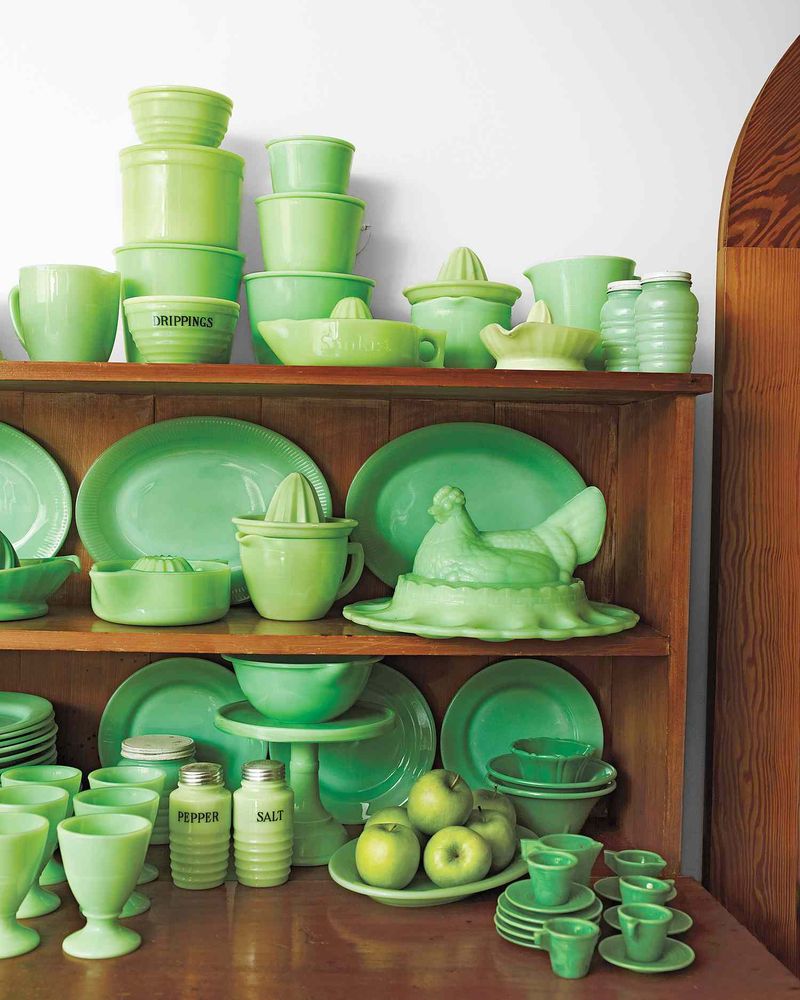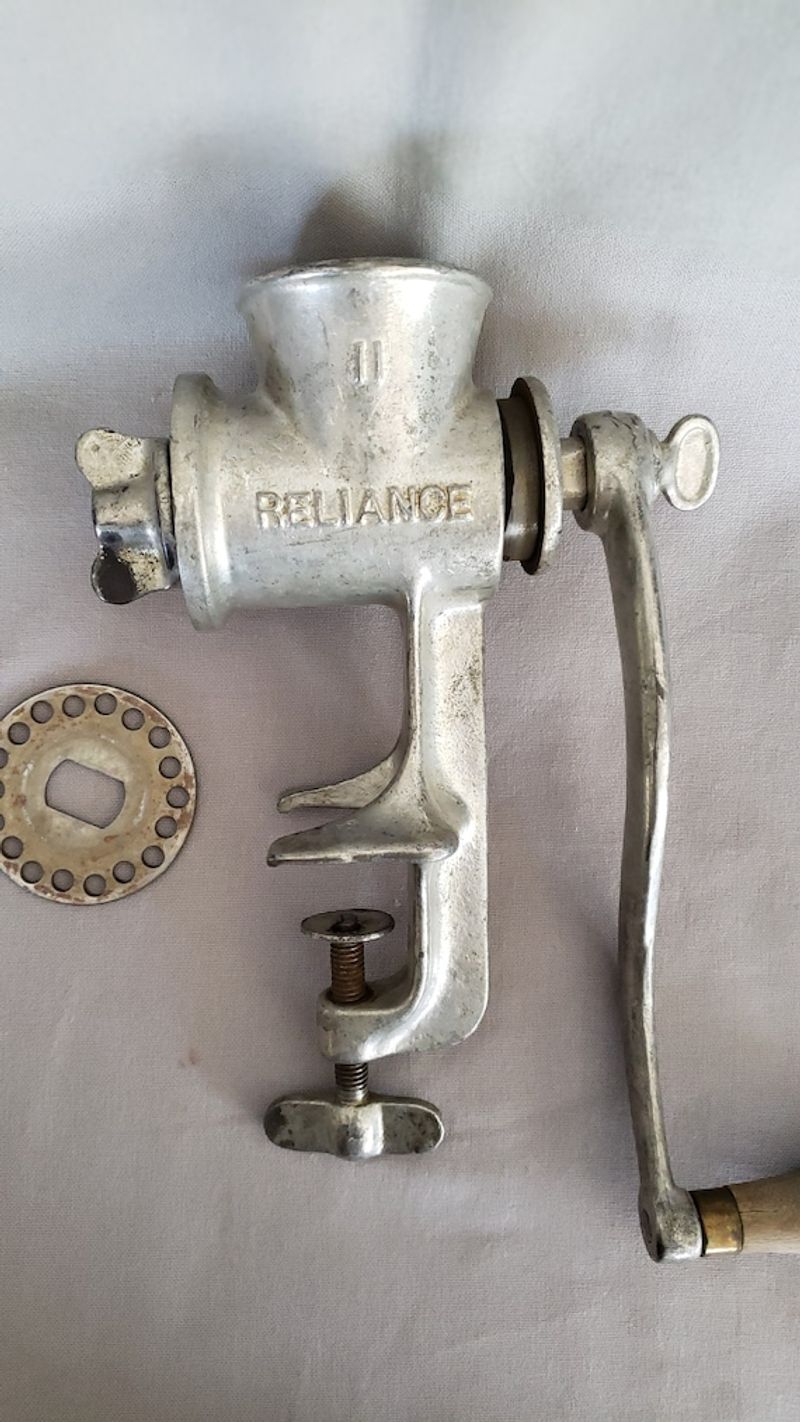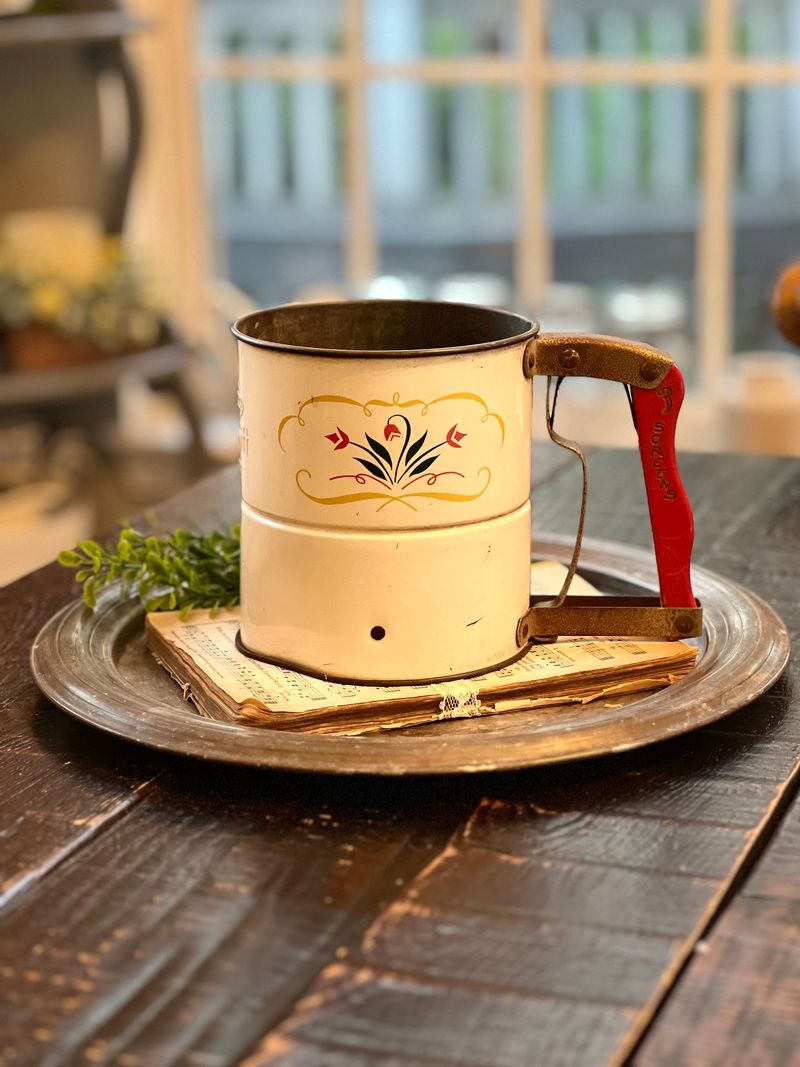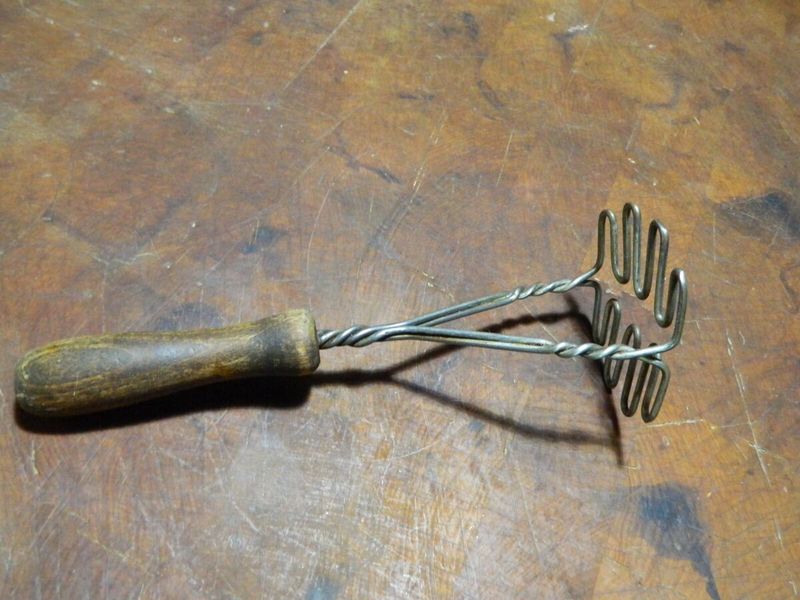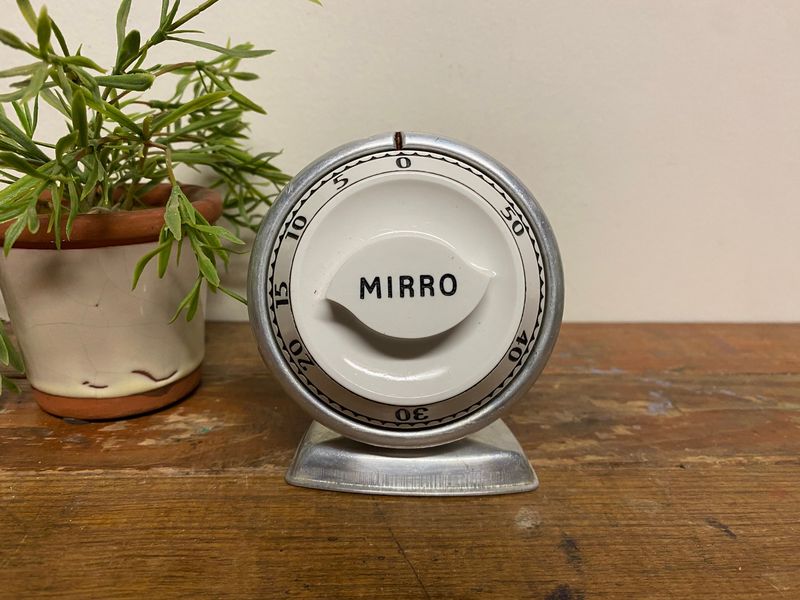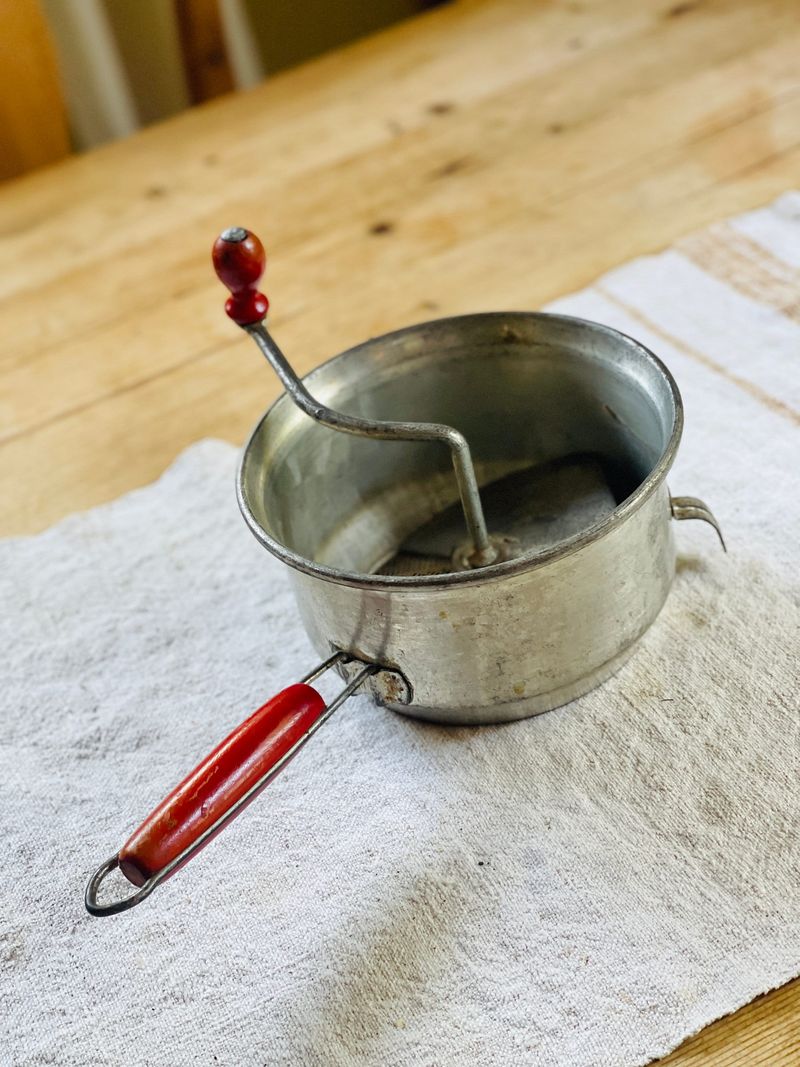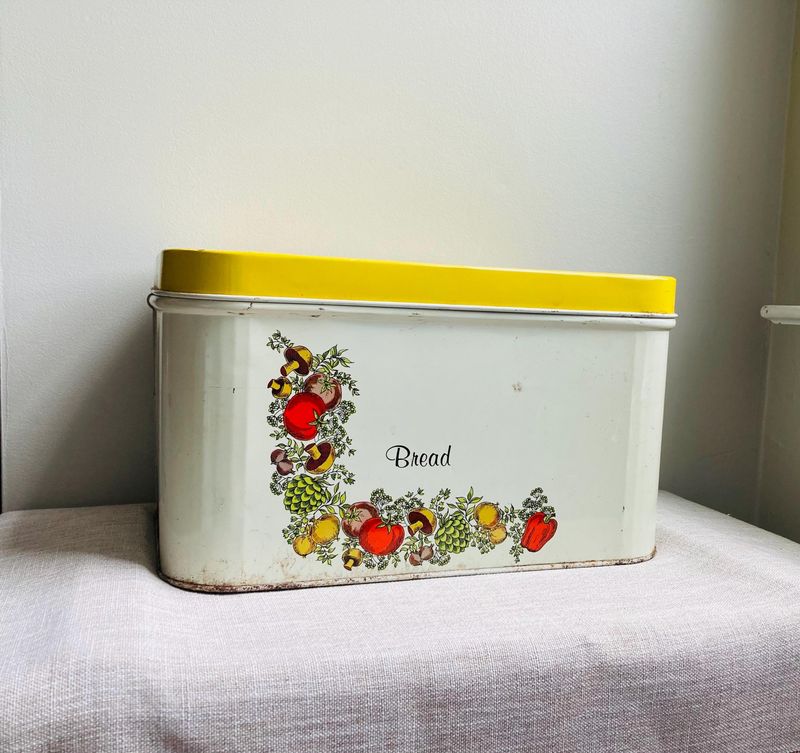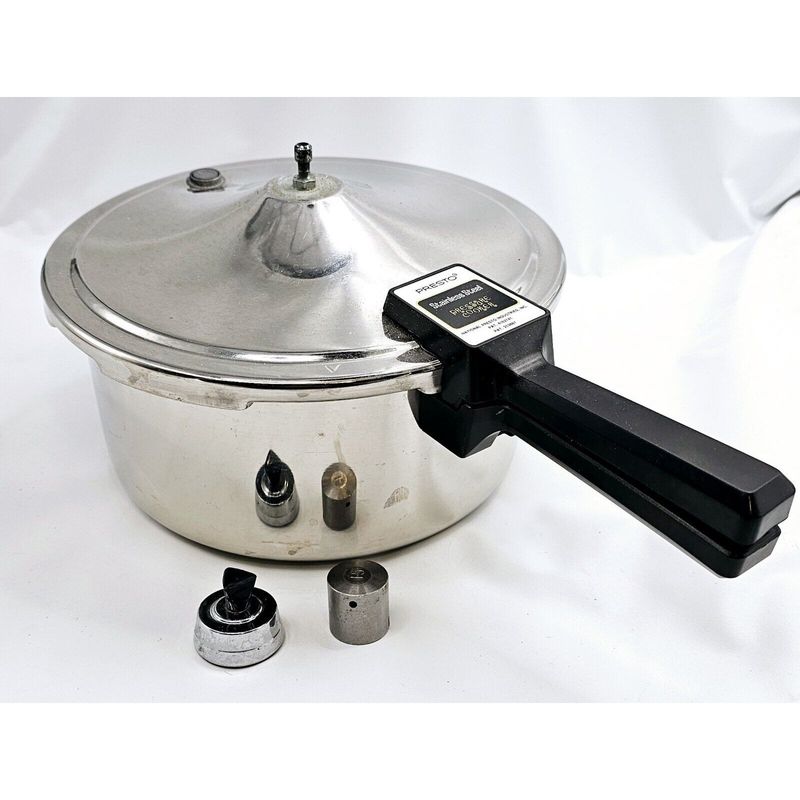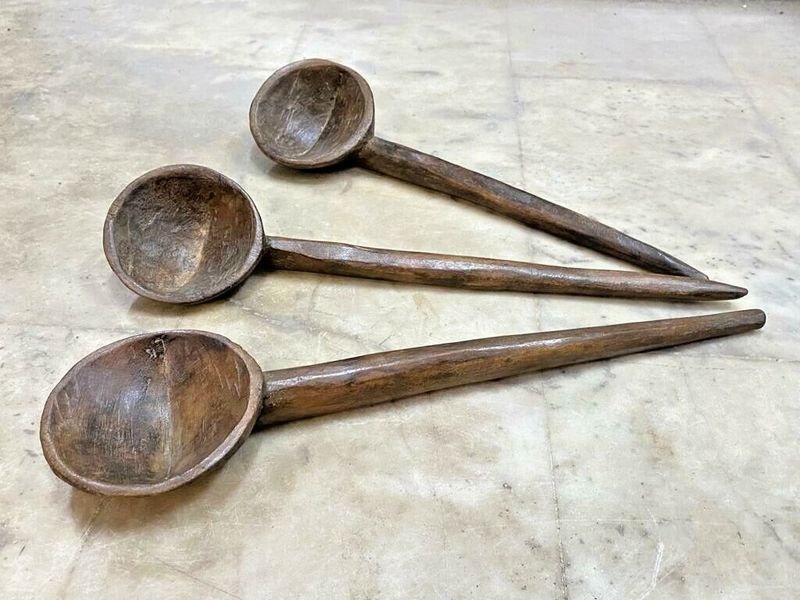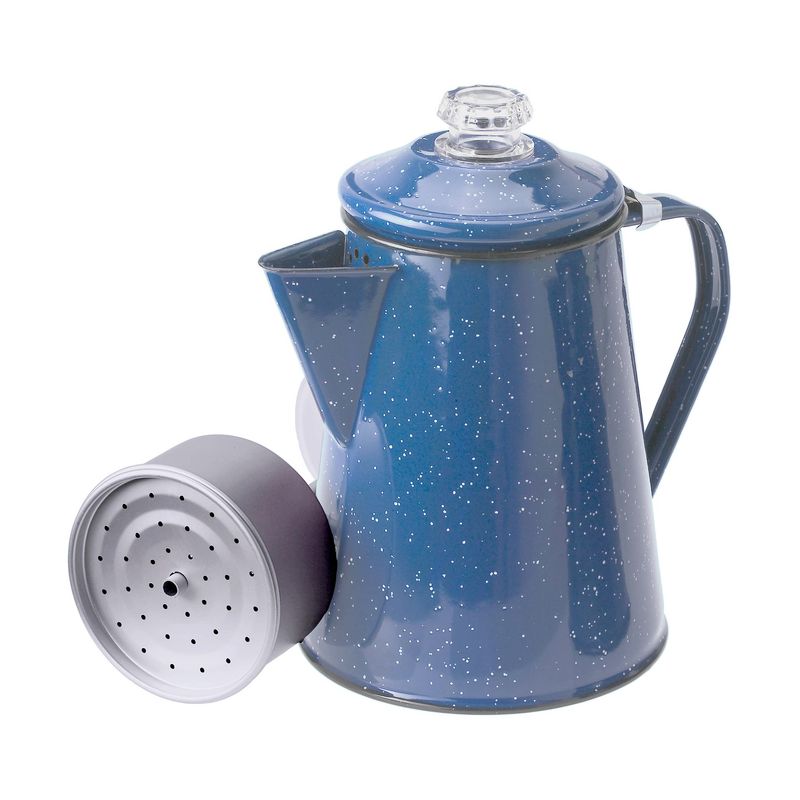There’s something special about vintage kitchen items – the kind that tell stories, feel sturdy in your hands, and bring a little nostalgia to every meal.
Long before gadgets got smart and trends changed overnight, these pieces were built to last and loved for generations. Some still quietly live in our drawers and cabinets, while others have become prized treasures at flea markets and antique shops.
Curious to see how many of these classic kitchen staples have found a place in your home? Let’s take a trip down memory lane and find out!
1. Cast Iron Skillet
Handed down through generations, these heavy-duty workhorses outlast any modern non-stick pan on the market. Their unmatched heat retention creates the perfect sear on steaks and gives cornbread that delectable crispy edge.
What makes these pans special isn’t just durability – it’s the seasoning that builds up over decades of use, adding flavor to everything from fried chicken to apple cobbler.
Many families can trace their history through these skillets. Properly cared for, a cast iron skillet becomes better with age, developing a natural non-stick surface that modern pans can only dream of achieving.
2. Pyrex Mixing Bowls
Those colorful nested bowls with the distinctive patterns weren’t just pretty – they were kitchen workhorses. From the sunshine yellow to the forest green, each size served a specific purpose in the busy kitchen of yesteryear.
The thick glass construction meant they could take a beating without chipping, which explains why so many have survived to become collector’s items today.
Modern reproductions simply can’t compare to the quality and charm of original Pyrex, with patterns like Butterprint, Gooseberry, and Friendship becoming highly sought after by vintage enthusiasts.
3. Manual Egg Beater
Before electric mixers dominated kitchen counters, this hand-cranked marvel transformed egg whites into stiff peaks through nothing but elbow grease. The satisfying whirr of the gears paired with the distinct clicking sound created a kitchen symphony that’s now rarely heard.
The simple mechanical design meant there were fewer parts to break compared to modern appliances. Despite being labor-intensive by today’s standards, these beaters delivered perfectly incorporated ingredients without the risk of over-mixing that electric versions can cause.
4. Butter Churn
Long before grocery stores stocked perfectly shaped butter sticks, families created their own creamy spreads with these ingenious devices. The rhythmic up-and-down motion transformed fresh cream into butter, often becoming a family affair on weekend mornings.
Wooden churns with glass containers allowed everyone to witness the magical transformation from liquid to solid. The satisfying moment when butter finally formed after 30 minutes of churning brought genuine excitement to the kitchen.
Many homesteaders still use these traditional tools today, appreciating both the superior taste of homemade butter and the connection to simpler times when food production was a hands-on family activity.
5. Metal Ice Cube Trays with Lever
Wrestling with these aluminum trays was practically a test of strength in mid-century kitchens! The metal lever mechanism required a firm tug to crack the ice, often sending cubes flying across countertops.
Unlike today’s flexible silicone versions, these rigid trays produced perfectly square cubes that clinked gloriously in highball glasses.
Families would often own multiple trays, filling and stacking them in the freezer compartment of their refrigerator to ensure enough ice was ready for summer lemonade or evening cocktails.
6. Rotary Phone Wall Mount
Strictly speaking, not just for cooking – but no vintage kitchen was complete without one! Mounted proudly on the wall, these communication hubs witnessed countless recipe exchanges and dinner invitations.
That distinctive rotary dial click-click-click followed by the whirring return created a rhythm that smartphones will never replicate.
Many kitchens featured phones in bold colors like harvest gold or avocado green to match the appliances, turning a utilitarian device into a statement piece that tied the room together.
7. Hand-Crank Coffee Grinder
Coffee enthusiasts know that nothing beats the aroma of freshly ground beans, and these wooden mills delivered that experience long before electric grinders existed. Typically mounted on kitchen walls or sitting atop counters, their distinctive shape became a hallmark of thoughtful coffee preparation.
Turning the metal crank by hand allowed for precise control over grind size – from coarse for percolators to fine for espresso. The small drawer catching the grounds would slowly fill, releasing that intoxicating coffee fragrance that signaled morning had officially begun.
Many of these grinders featured ornate designs with brass fittings and decorative elements, making them both functional tools and beautiful kitchen decor pieces.
8. Jadeite Glassware
That distinctive milky green glass brightened Depression-era kitchens when little else could. Originally offered as promotional items in flour sacks or as movie theater giveaways, these affordable pieces brought color to tables during difficult economic times.
Martha Stewart’s famous collection sparked renewed interest in jadeite during the 1990s, sending prices soaring for original Fire-King and McKee pieces. From cake stands to measuring cups, the opaque green glass created a cohesive look that modern kitchens try to replicate.
Beyond its beauty, jadeite’s durability made it practical for everyday use—many pieces have survived decades of service while retaining their distinctive color and smooth finish.
9. Wooden Rolling Pin
Smooth from decades of flour-dusted use, these simple cylinders transformed dough into perfect pie crusts under grandmother’s skilled hands. Unlike modern silicone or marble versions, wooden rolling pins absorbed just enough moisture to prevent sticking without chilling the dough.
The weight of a quality hardwood pin did half the work, requiring less pressure to achieve uniform thickness. Many pins became treasured heirlooms, passed down with handwritten recipe cards and family baking secrets.
Look closely at vintage versions and you might find subtle indentations where hands gripped the handles thousands of times, creating a physical record of countless holiday cookies and Sunday morning cinnamon rolls.
10. Meat Grinder Clamp
Securing to countertops with an intimidating metal clamp, these hand-powered workhorses processed Sunday roast leftovers into weekday hash or hamburgers. Different sized grinding plates allowed for various textures, from coarse for chili to fine for sandwich spreads.
The cast iron construction meant these devices lasted for generations, with many still functioning perfectly after 70+ years of service.
11. Flour Sifter
Nothing captures the rhythm of traditional baking quite like the squeaky-crank sound of a metal flour sifter in action. That distinctive noise announced that something delicious was in the works, as fine, aerated flour cascaded into waiting mixing bowls.
Most featured charming painted measurements on the side and a simple squeeze-handle mechanism that even small helpers could manage. Beyond just removing lumps, these tools incorporated air into flour, creating lighter cakes and biscuits than today’s pre-sifted commercial products.
Many kitchens had dedicated spots where sifters lived permanently, often with residual flour still inside—ready for the next batch of grandma’s legendary dinner rolls.
12. Potato Masher
Forearm strength was a requirement for anyone wielding these zigzag-patterned tools against a pot of boiling potatoes. The distinctive wire or perforated metal head created the perfect texture – leaving just enough chunks for character while eliminating unwanted lumps.
Unlike electric mixers that can quickly turn potatoes gluey, these manual tools allowed for perfect control. Thanksgiving mashed potatoes became the ultimate test of a masher’s efficiency, with family members often volunteering to help just to show off their technique.
The simple design has remained largely unchanged for generations, proving that sometimes the original version of a kitchen tool simply can’t be improved upon.
13. Mechanical Kitchen Timer
The ticking countdown of these wind-up sentinels kept generations of bakers from burning their creations. Shaped like eggs, apples, or classic dials, they required a satisfying twist to set the desired cooking time.
Unlike silent digital timers, their steady tick-tick-tick provided auditory confirmation that they were working, followed by that distinctive BRRRRING that could be heard throughout the house.
Many home cooks could instinctively feel when the timer was about to sound, developing an almost supernatural connection with their trusty timekeeper.
14. Hand-Cranked Food Mill
Summer canning sessions weren’t complete without this versatile tool separating seeds and skins from garden-fresh tomatoes. The genius three-part design—hopper, grinding disk, and collection bowl—created perfectly smooth applesauce, tomato sauce, and baby food long before food processors existed.
Rotating the wooden handle pressed soft foods through perforated disks of various sizes while automatically ejecting unwanted solids. The resulting texture was impossible to achieve with blenders, which either left too many chunks or processed food too smoothly.
The stainless steel construction meant these workhorses survived decades of use, often becoming the centerpiece of intergenerational canning parties where family recipes and techniques were passed down.
15. Tin Bread Box
Proudly displayed on countertops, these decorated metal containers kept homemade bread fresh while adding character to the kitchen. The satisfying clunk of the lid closing after retrieving a slice for toast became part of the morning soundtrack in homes across America.
Often featuring hand-painted designs or embossed patterns, bread boxes served both practical and decorative purposes. The ventilation holes cleverly allowed just enough air circulation to prevent mold while maintaining the perfect humidity level for crusty loaves.
Beyond bread storage, these versatile boxes often housed cookies, muffins, and other baked goods that modern families might refrigerate—a practice that actually accelerates staleness in baked products.
16. Glass Juicer
Sunday mornings often began with the twisting motion of halved citrus fruits against these ridged glass cones. The simple yet effective design directed juice downward while convenient measuring marks on the collection bowl indicated exactly how many oranges remained to be squeezed for a family breakfast.
The heavy glass construction prevented tipping during vigorous juicing sessions, while the built-in strainer caught seeds before they could reach the pitcher. Unlike electric juicers, these manual versions extracted juice without the bitterness that comes from crushing rinds and pith.
17. Milk Glass Spice Jars
Arranged in alphabetical order from Allspice to Thyme, these opaque white containers with colorful lids added a touch of organization to cupboard shelves. Their distinctive hobnail or beaded patterns made them decorative enough to display openly on countertops or dedicated spice racks.
The wide mouths accommodated measuring spoons perfectly, while tight-fitting lids preserved freshness. Many families still treasure grandmother’s complete sets, sometimes with faded handwritten labels indicating which spices were used most frequently in beloved family recipes.
18. Pressure Cooker with Weight
Instilling equal parts fear and fascination, these hissing beasts transformed tough cuts of meat into tender feasts in record time. The distinctive jiggling weight that regulated pressure became a kitchen metronome, its rhythmic dance signaling that dinner was progressing properly.
Mothers passed down sacred knowledge about these devices – never remove the lid before pressure drops, always check the rubber gasket, and never leave the kitchen while it’s working.
The characteristic whistle when releasing steam announced dinner was nearly ready, summoning family members from throughout the house. Despite modern electric versions, many cooks still prefer these stovetop workhorses for their reliability and superior results with beans, stews, and pot roasts.
19. Wooden Spoon Collection
Certain kitchen drawers contained an arsenal of these humble tools, each worn to a specific shape from years of stirring, mixing, and tasting.
No metal utensil could match wood’s gentle touch on non-stick surfaces or provide that perfect scraping action against the bottom of a pot. The slight discoloration from turmeric or beet juice became badges of honor rather than flaws.
Many cooks swear their grandmother’s wooden spoon imparted something magical to recipes that modern silicone tools simply cannot replicate—perhaps the wisdom absorbed from thousands of meals.
20. Enamelware Coffee Pot
Camping trips and farmhouse mornings began with the distinctive perk-perk-perk sound emanating from these speckled pots. The blue-and-white speckled exterior became nearly as recognizable as the rich aroma of the coffee brewing inside.
Making coffee was a ritual – counting scoops, adding water to the precise line, and waiting for that first bubble to appear in the glass knob on top. The percolation process created a distinctive flavor profile that drip and pod machines simply cannot duplicate.

